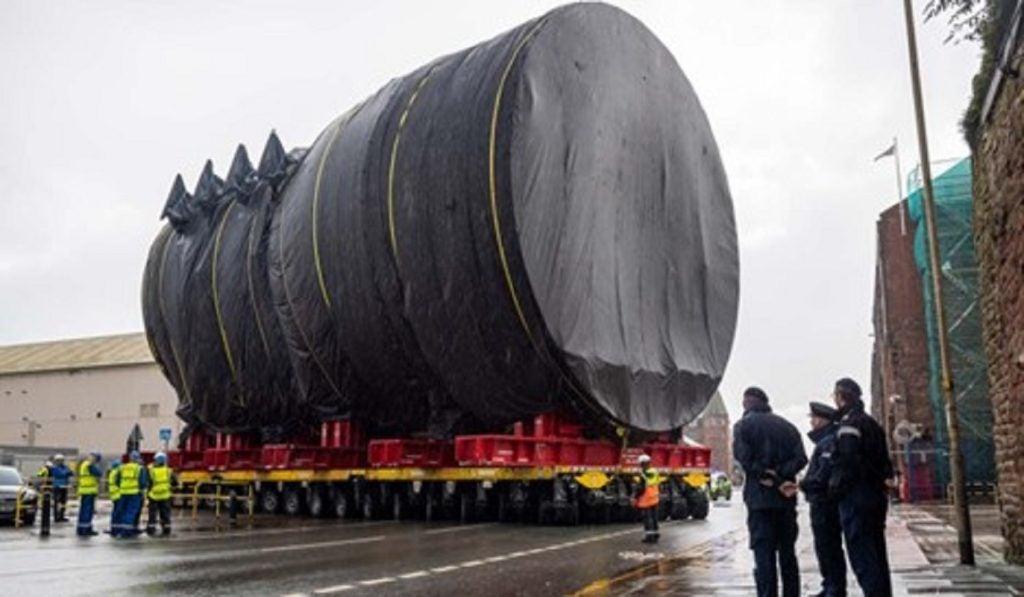The UK Royal Navy has announced that it has completed the construction of the largest segment of the future Dreadnought nuclear ballistic missile submarine (SSBN) at its facility in Barrow-in-Furness, Cumbria on 18 October.
The original equipment manufacturer, BAE Systems, was originally contracted in 2012 to begin its initial design of the four future SSBNs – Dreadnought, Warspite, Valiant and King George VI – and another detailed design task in 2015.
The £31bn ($37.6bn) Dreadnought programme will replace the ageing Vanguard-class as Britain’s next-generation strategic deterrent boats, which employ the Trident II D5 ballistic missiles.
Upon completion, the Dreadnought-class submarine will become the Royal Navy’s largest submarine. It will have a length of 153.6 metres (m) and displacement of 17,200 tonnes (t). It will be installed with 42.5 kilometre (km) of piping, approximately 13,000 electrical items and more than 20,000 cables.
To date, four successors will be built, of which Dreadnought leads the way, ahead of HMS Warspite and Valiant (also under construction), with work yet to start on Boat No. 4, HMS King George VI.
All will be assembled under cover in the dock hall – 260m long, 58m wide and 51m high, making it almost large enough to accommodate the Titanic – where the final two Astute-class submarines, HMS Agamemnon and Agincourt, are in the later stages of construction/completion, and where the ‘mega unit’ will take its place on the Dreadnought build line.
Dreadnought is due to enter service in the early 2030s while the Vanguard fleet begins retiring after four decades carrying out Operation Relentless, the UK’s strategic deterrence mission.









